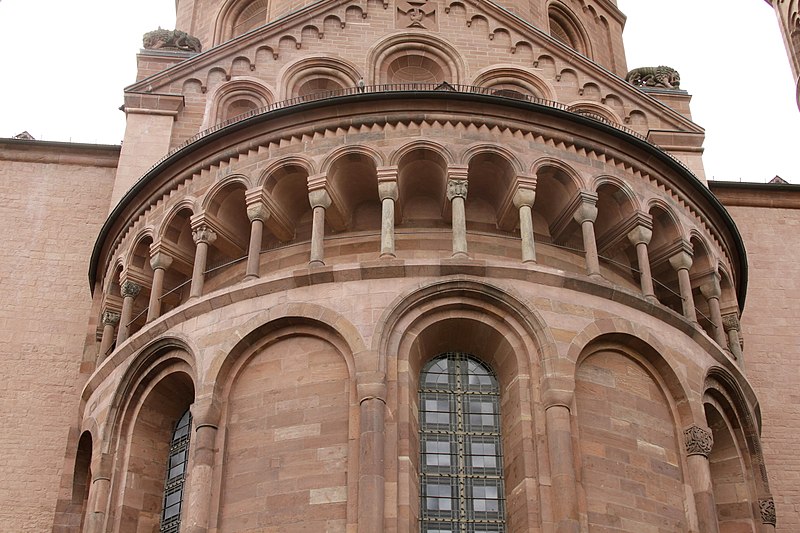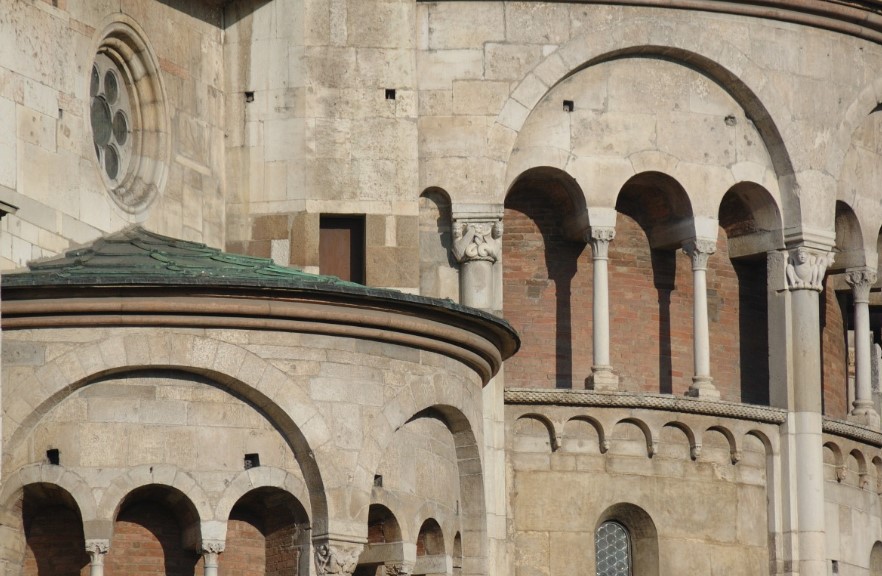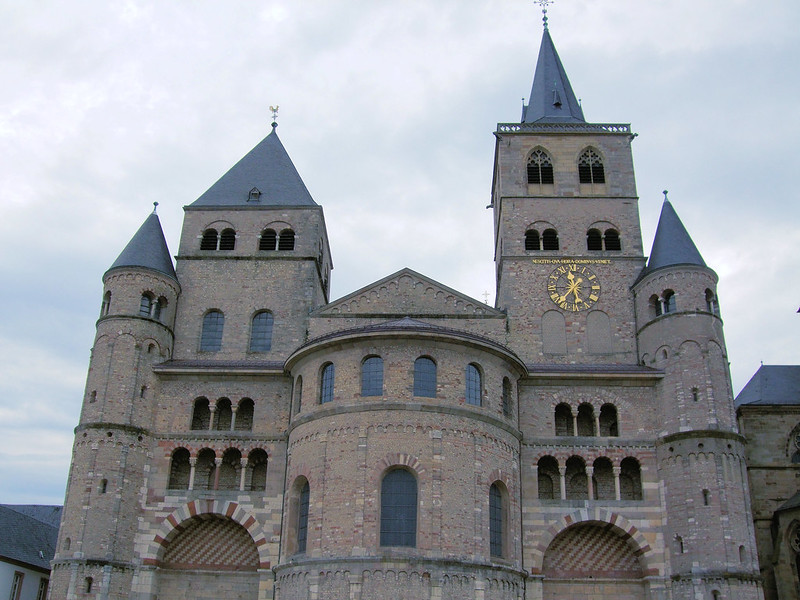Dwarf gallery
 Worms Cathedral, Worms, Germany (completed in 1181).
Worms Cathedral, Worms, Germany (completed in 1181).
Romanesque architecture mainly developed in Europe in the Middle Ages between the 10th and 12th centuries. It adopted some of the features of Roman and Byzantine architectural forms and materials, characterised by thick walls, round arches, vaults and vast towers. It was a pan-European style, although it is often referred to as 'Norman' in the UK.
One of the distinct features of Romanesque architecture, and some of the styles it was derived from, is the dwarf gallery. While the origin of the name is unknown, some suggest the term was used because the gallery was thought to be a passage for spirits or imps.
Dwarf galleries are typically inaccessible and purely decorative. They serve no practical purpose and are only a visual element, although some dwarf galleries have been used by priests to showcase religious items to crowds below.
Most often found in churches in Germany and Italy (although a few examples do exist in France and the Netherlands), dwarf galleries are covered passageways several stories above the ground (often towards the top of the structure) on the exterior of a building. They are typically closed in by a solid wall on one side. The outward facing side is open for public view and may be decoratively lined with columns that are sometimes linked together by arches.
[edit] Famous dwarf galleries
Mainz Cathedral, Mainz, Germany (dedicated in 1009).
Southeastern choir tower, apse and dwarf gallery, St Servatius, Maastrict, Netherlands (dedicated in 1039).
(Left) Pisa Cathedral, Pisa, Italy (consecrated 1118) and (right) Leaning Tower of Pisa, featuring six rings of dwarf galleries (completed in 1372).
Modena Cathedral, Modena, Italy (1184).
Trier Cathedral, Trier, Germany (current structure completed 1270).
In Notre-Dame de Paris (completed in 1345), the Gallery of Kings (located just below the rose window) is a dwarf gallery that was filled with statues depicting 28 figures known as the Kings of Judah. These statues were destroyed during the French Revolution, but their heads were saved, hidden and then donated to the Musée de Cluny. They were replaced by 19th century reproductions.
[edit] Related articles on Designing Buildings Wiki
Featured articles and news
From studies, to books to a new project, with founder Emma Walshaw.
Types of drawings for building design
Still one of the most popular articles the A-Z of drawings.
Who, or What Does the Building Safety Act Apply To?
From compliance to competence in brief.
The remarkable story of a Highland architect.
Commissioning Responsibilities Framework BG 88/2025
BSRIA guidance on establishing clear roles and responsibilities for commissioning tasks.
An architectural movement to love or hate.
Don’t take British stone for granted
It won’t survive on supplying the heritage sector alone.
The Constructing Excellence Value Toolkit
Driving value-based decision making in construction.
Meet CIOB event in Northern Ireland
Inspiring the next generation of construction talent.
Reasons for using MVHR systems
6 reasons for a whole-house approach to ventilation.
Supplementary Planning Documents, a reminder
As used by the City of London to introduce a Retrofit first policy.
The what, how, why and when of deposit return schemes
Circular economy steps for plastic bottles and cans in England and Northern Ireland draws.
Join forces and share Building Safety knowledge in 2025
Why and how to contribute to the Building Safety Wiki.
Reporting on Payment Practices and Performance Regs
Approved amendment coming into effect 1 March 2025.
A new CIOB TIS on discharging CDM 2015 duties
Practical steps that can be undertaken in the Management of Contractors to discharge the relevant CDM 2015 duties.
Planning for homes by transport hubs
Next steps for infrastructure following the updated NPPF.
Access, history and Ty unnos.
The world’s first publicly funded civic park.
Exploring permitted development rights for change of use
Discussing lesser known classes M, N, P, PA and L.
CIOB Art of Building photo contest 2024 winners
Fresco School by Roman Robroek and Once Upon a Pass by Liam Man.
































